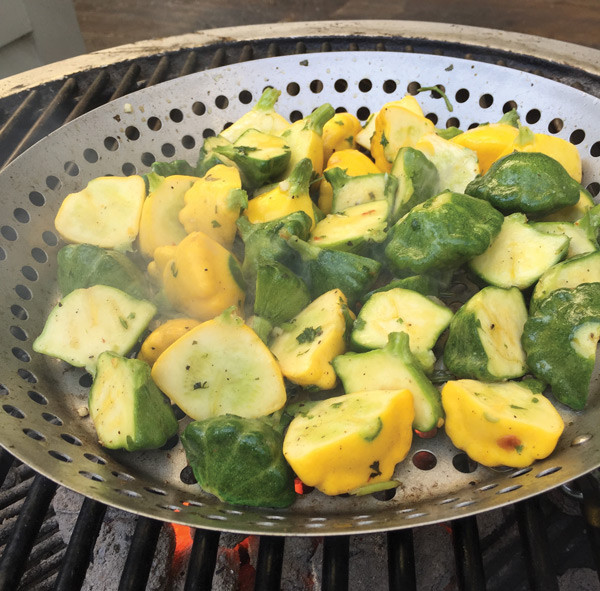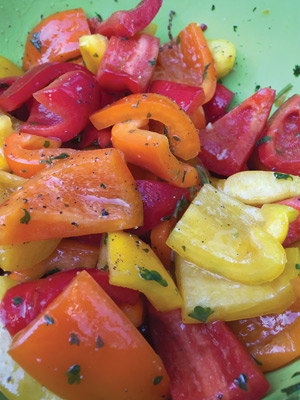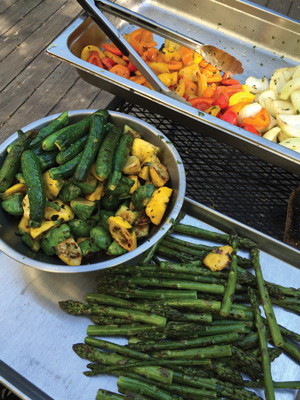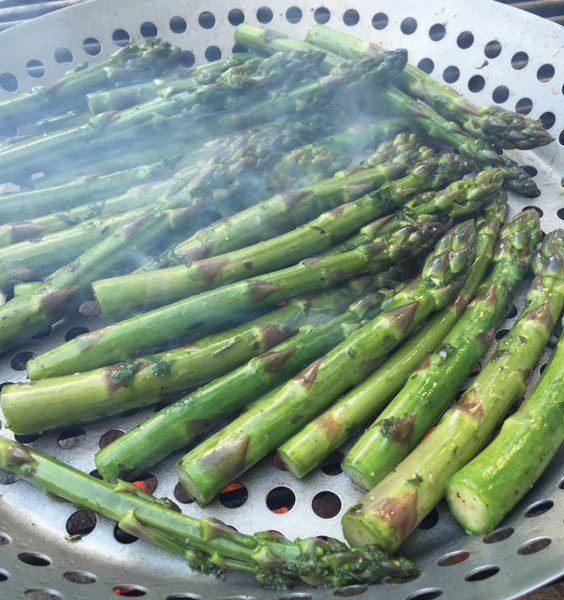The Magic Of Aromatic Herbs
I call vegetables the stars of my kitchen and aromatic herbs (and spices), superstars because they elevate a dish to a higher level, both in flavor, aroma and eye appeal.
Imagine a caldo de res (beef soup) or a kaq ik (turkey soup from Coban) without aromatic herbs and vegetables. A typical caldo de res contains anywhere from 5-15 ingredients (depending on the maker) that give the soup character. These include beef, onions, celery, carrots, peppers, cilantro, parsley and many more. Kaq ik, on the other hand, in addition to turkey, contains dried peppers, and the key herb zamat (wild cilantro), mint, cilantro and other ingredients.
Chirmol would not have its distinctive taste without mint or cilantro or both. The role of herbs in the kitchen is pivotal, as they raise any dish from ordinary to extraordinary.
There is a myriad of herbs to use alone or in combination to make a dish superb. I often crave plates with lots of vegetables and when I cook them at home, I either steam or roast them. Then all I have to do is to season them with a drizzle of olive oil, salt and freshly ground black pepper, and finish them with one or more herbs quickly snipped with scissors or torn by hand. Sometimes I’ll add a touch of seasoned vinegar or simply lime juice.
Some time ago in Guatemala, herbs were predominantly used for soups, stews and sauces. Now they are more visible even as garnishes as the cuisine has evolved and fused with other cuisines. I see herbs being fried more and more. I am in conflict with this because I like the way they taste but dislike that unnecessary calories are added and some nutrients are lost in the cooking process.
Common traditional fresh herbs in Guatemalan cooking are cilantro, mint and parsley. Dried herbs (spices) include oregano, thyme, bay leaves, chili peppers and more. But there many other herbs available in mercados that home cooks may not include in their repertoire for lack of familiarity. During one of my last visits to Guatemala, I rediscovered 10-15 herbs that are available (in just one mercado) in addition to the usual ones, and if you are out in other regions, more varieties are available.
Beyond cooking, herbs, both fresh and dried, serve different purposes. Many of them are used as medicinal plants to cure common illnesses. Indigenous people, as well as mothers and grandmothers in the countryside and even in the bigger cities of Guatemala, still believe in the healing powers of herbs. These are deeply ingrained traits that have been around for generations. The last time I visited my sister, she recommended pericón (a tarragon-like flavor herb infusion) for a digestive problem. I drank the tea and felt relief after just a few minutes.
One word of caution about herbs, while they might be great for cooking and even healing, as medicine they can be harmful if consumed in higher quantities and may not be a good option for everyone, especially for people who are on prescription meds, the very young or the elderly. Counter or adverse reactions can happen with medication and herbs that can compound side effects. Interestingly, some medications come from herbs and plants, too.
Other uses of herbs (and other plants) include dye-making for Mayan textiles. Next time you go to Guatemala, visit some of the Mayan villages where they grow medicinal plants for both healing and for infusions, teas, oils, soaps, dyes and much more. You’ll discover a different side of the Mayan culture.
Here is a recipe to celebrate herbs and the summer season.
Herbed Charred Vegetables
Recipe by Chef Amalia Moreno-Damgaard
Serves 4
1 cup zucchini in big chunks
1 cup baby squash, halved
1 cup bell pepper medley, in eighths
1 cup Vidalia, Spanish or yellow onions, quartered
1 cup olive oil
Salt and freshly ground black pepper
Sauce:
¾ cup red wine vinegar,
1 cup olive oil,
salt and freshly ground black pepper,
mixed herbs (cilantro, mint, basil, tarragon) roughly chopped.
Combine all ingredients in a bowl and whisk. Taste and adjust seasonings, if needed.
In a bowl, toss all vegetables individually and season with salt and pepper.
Grill vegetables in batches until light to medium charring begins. This will take 2-3 minutes per vegetable to keep them crisp, or adjust the grilling time according to level of charring desired, keeping in mind that longer cooking will make the vegetables limp.
To serve, keep separate, or combine all vegetables in a big bowl, drizzle with the sauce generously (add extra pepper if desired) and serve.
Amalia Moreno-Damgaard is an award-winning bestselling chef author born and raised in Guatemala City currently living in the Twin Cities. She provides individuals and companies with a taste and understanding of Latin cultures through healthy gourmet cuisine education, consulting, bilingual speaking and writing and fun culinary experiences.
Her cookbook “Amalia’s Guatemalan Kitchen-Gourmet Cuisine With A Cultural Flair” has won 9 international awards. AmaliaLLC.com



